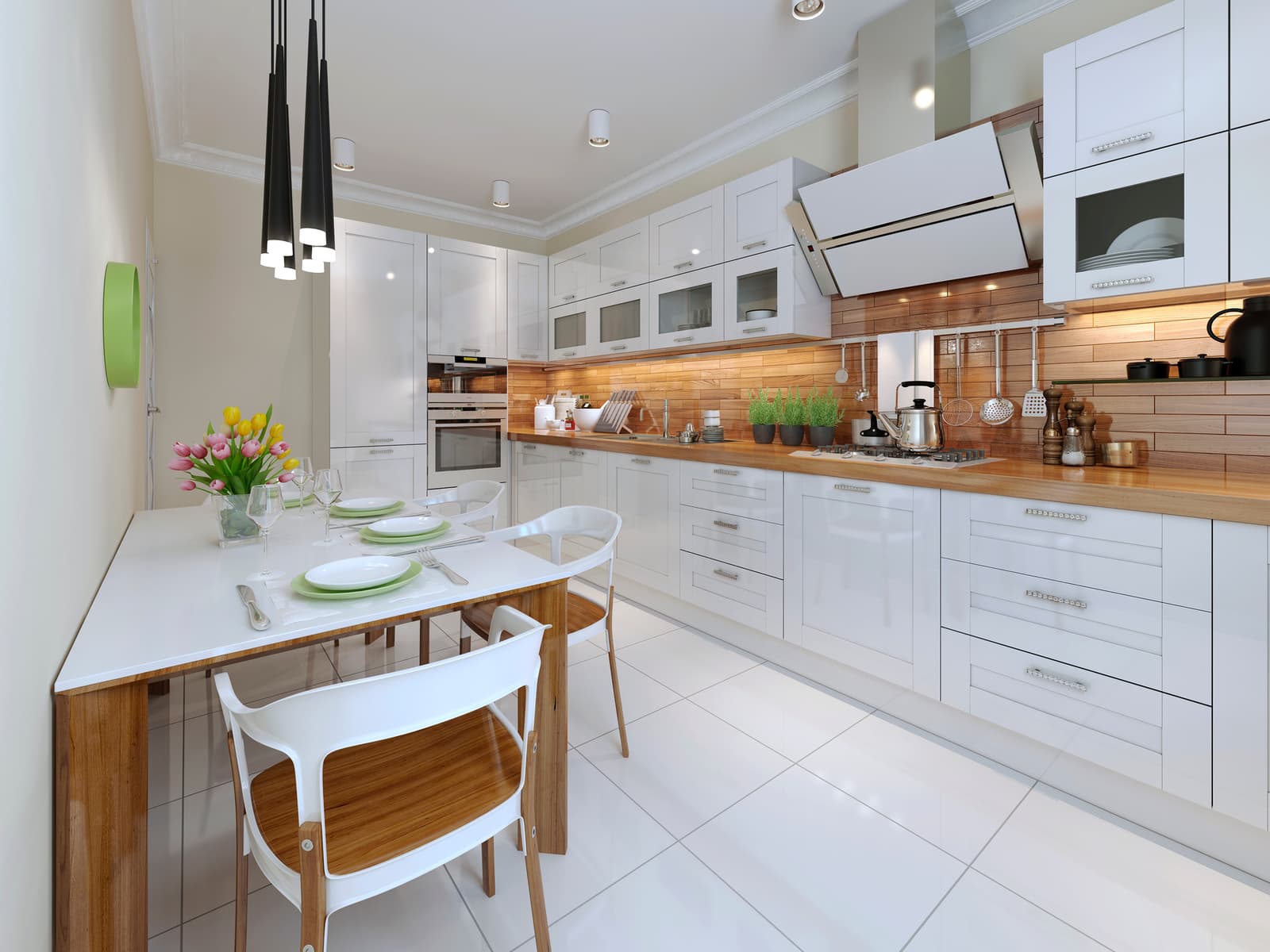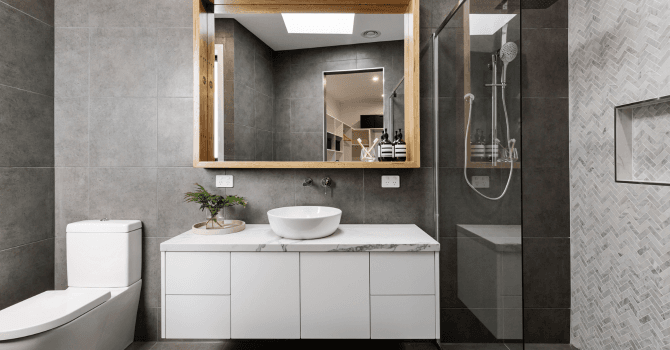
Are your hardwood floors damaged? Thinking of renovating them? RenoQuotes.com has got you covered, detailing solutions for repairing hardwood floors, including various ways to refinish your wood floors for effectively shielding newly buffed surfaces.
Wood floors are one of the most elegant and long-lasting household floorings. Yet, given that wood is a living thing, it has to be maintained regularly to preserve its aesthetic appeal and longevity.
How to Repair Old, Damaged Hardwood Floors

Source: Canva
There’s an unlimited amount of ways one can damage hardwood floors. Although some problems, such as sagging floorboards, call for a professional intervention, others can be undertaken as a weekend DIY project if you put in the right amount of time and effort. This article is an in-depth overview of four common floor repairs you can do with the confidence of a well-seasoned expert.
Can You Replace One Plank? How to Fix Damaged Floorboards
Before jumpstarting any renovation, inspect your wood floors. If you spot some damaged floorboards, plan on replacing them. To do so, start by chiselling both ends of the deteriorated board. Then, drill relief holes that are wide enough to insert a saw blade.
Once done, saw the length of the damaged floorboard. You can also gently break the plank down using a hammer or screwdriver. Remember to check the state of the floor joists or subfloor before moving forward.
Once the above-mentioned is completed, install the new board. Make sure it's secured to the subflooring or joists with nails.
How to Fix Scratches on Hardwood Floors
Below are guidelines for repairing superficial or deep scratches on your flooring.
Superficial Scratches
There are several effective ways to repair minor scratches on wood floors. Store-bought options such as stain markers, wax sticks, and touch-up markers can fill in scratches with a floor colour match, concealing the flaws as best as possible.
When choosing a floor repair marker, opt for a colour that matches your wood, testing it on a small, inconspicuous section first. Start with a lighter colour than the floor; you can always darken it with a second coat later. Gently draw over the scratch and wipe off any excess with a clean towel. Work in small sections at a time as these markers tend to dry quickly.
Moreover, there are also plant-based solutions, such as using nuts, coconut oil, and a baking soda and olive oil mixture to help conceal scratches as best as possible.
When using olive oil and baking soda on scratches, mix equal parts to create a paste and apply it to the area in question. Otherwise, rub a raw nut over the scratch to fill in the grooves with its natural oils, then buff the area with a soft tack cloth for a flawless finish.
Deep Scratches
To repair deep gouges and scratches in hardwood flooring, using wood filler or putty, sanding the surface, and applying a floor finish is the best course of action. Start by vacuuming the area with a shop vacuum or meticulously wiping down the area with a microfibre mop to remove all debris. Apply a colour-match wood floor filler using a plastic putty knife or the back of a credit card to fill in the scratch and remove any excess product. Once dry, sand the surface and apply a protective finish if need be.
To apply wood filler over a scratch or gouge, use a putty knife to fill the scuff mark and even it out. Wipe off any excess product while it’s still soft for a flawless and level finish. Choosing a colour that matches the surrounding flooring is essential. Opt for a wood filler that was specifically made for wood floors for the best results.
Sanding and adding a hardwood flooring finish is essential for repairing deep gouges on hardwood floors. Once the putty has cured, sand the surface to even it out with the floor. Test the stain with a matching product and polyurethane varnish to ensure a uniform finish. If you plan on using a polyurethane floor finish, use a water-based option for new flooring and an oil-based product for old or worn-out flooring. To save time and resources, test the product on an inconspicuous part of the floor prior to repairing.
Can Hardwood Floors Be Patched?
Ultimately, the method used to repair a hole in your floor depends on the gravity of the situation. Fixing a small-, medium-, or large-sized hole mandates a situation-specific approach.
Small Holes
Wood repair markers are made for filling in small, differently shaped, holes. They’re retailed in an array of colours, simply choose the one that best suits the look of your flooring.
Medium-Sized Holes
If a hole is too big to fix using a floor repair marker, use wood filler or putty. Such easy-to-use products can be moulded to fill cracks and grooves, and any excess product can be removed thereafter, hassle-free. Make sure to choose a shade of putty or wood filler that suits your flooring’s colour.
Big Holes
For larger holes or more visible ones, wood putty is the ideal solution. This sort of product sticks to the wooden surface as it dries and can be stained to match the shade of your flooring. However, applying it can be a bit trickier.
Start by stripping the finish from the area around the hole to ensure the putty adheres properly. After applying the putty, allow it to dry according to the manufacturer’s instructions. Once cured, sand the putty until it’s level with the floor. Lastly, stain and refinish the repaired area. If you want flawless results, you might want to consider hiring a professional floor repairer.
How to Repair a Creaking Hardwood Floor
There are a whole lot of reasons for floor creaking. Below are some of the most common root causes and quick fixes to help solve the issue.
Installing Shims
To pinpoint the source of creaking or squeaking floorboards, look below the subflooring while someone else walks on the floor above. Pay close attention to the sounds emitted; all squeaking can be indicative of gaps between the subflooring and the floor joists.
To fix this little annoyance, get some shims and wood glue. Carefully wedge the shims in the gaps without nailing them in place, but rather use glue. Repeat the process if necessary to eliminate all noises and restore your floor’s stability.
Insert Wooden Blocks Between the Joists
If your floor joists are positioned too far apart, have aged, or are showing signs that they may be prone to shifting when under strain, reinforcing them can definitely improve stability.
To do so, add backers between the subflooring and the joists, using the same wood size as that of the existing structure. Add backers and filler blocks between the joists as makeshift struts. Apply construction glue on the side that will sit against the subflooring, then secure both ends of the filler blocks to each joist with a screw, ensuring the connection is strong and minimizing potential shifting.
Lubricate the Floorboards
Lubricating hardwood floors is a simple and effective way to eliminate squeaking. This process involves applying a substance—known as a lubricant—to minimize friction.
To give this a try, spread a generous amount of powdered graphite over the squeaking area, then cover the powder with paper towels. Next, put on your shoes and work the powder into the gaps between the floorboards using your feet, moving them back and forth and in a circular motion for a few minutes. Doing so can significantly minimize friction and help silence annoying squeaking.
How to Refinish Hardwood Floors: Different Floor Finishes

Source: Canva
After sanding your floors—if you’ve done so—pick out a floor finish. There are three types of floor finishes, each with unique upsides and drawbacks.
Sealant (Varnish)
This is the most commonly used floor finish. It provides a long-lasting protective film, coating the floorboards against potential damage, such as stains, shocks, etc. It comes in several finishes: glossy, satin, and matte. There’s a little something for all tastes and aesthetics. This type of floor finish is also relatively affordable. However, it’s not as aesthetically pleasing as the other two floor finishes detailed.
Find more information about floor varnish in this article: Choosing a Varnish for Your Wood Floor.
Oil
An oil-based finish will give your wooden floors a rather “traditional” look, while also rendering them more resilient and easy to upkeep. Due to its rich plant-based manufacturing, it further makes the floorboards look natural. In terms of downsides, this finish is irreversible, as it seeps deep within the wood grain. Furthermore, it requires regular maintenance—every six months or so.
Wax
Wax makes for a natural-looking finish, yet less resilient than varnish. It’s relatively easy to apply, nourishing and protecting your wood floors. Wax gives wood flooring a patina-like aspect. However, it’s not as durable as varnish and does require more upkeep. For example, should your flooring stain, you’ll have to sand it again and apply a new coat of wax.
Floor Refinishing: Sanding and Varnishing Price Ranges
Type of Varnish and/or Job | Average Price Range (Product & Labour) |
Basic varnish and sanding | $1.50–$1.75/square foot |
Standard varnish and sanding | $2–$2.50/square foot |
High-end varnish (heavy foot traffic) | $3–$3.50/square foot |
New varnish coating | ≈ $1/square foot |
Floor repairs | $10–$40/floor plank |
Check out these articles for more information about hardwood flooring:
Looking for something else?
Related articles
The latest industry news, interviews, technologies, and resources.

Editorial Team
•05 Mar 2025
Choosing to lay oak flooring in your home has a major aesthetic upside, as wood floors are considered a timeless classic: elegant, durable, and sleek. Specifically, oak flooring is a great option for those seeking a long-lasting and versatile material option.
Editorial Team
•13 Aug 2024
Do you find yourself looking down on your vinyl floor, figuratively and literally, and wondering why it looks so worn out? If so, your first thought might be to head straight to the nearest hardware store to buy new flooring. While vinyl isn’t an especially costly material, letting it wear instead of restoring it would be such a waste.

Editorial Team
•07 Nov 2023
You may be of the mind that renovation is renovation. When considering the end result, this is the case but when it comes to the process itself, there are many different factors that weigh in. If you’re currently living in a condo and wanting to renovate, you’ll face certain limitations, possibilities and strategies for approaching it. In this article, we’re going to look at a condo kitchen renovation and all of what you should consider when renovating this space. This will help you to avoid unwanted surprises during the process.

Léa Plourde-Archer
•04 Oct 2024
Ceramic is a highly-resistant and versatile material that is known for being both practical and aesthetically pleasing. Adapted to all tastes, it is sold in the form of tiles that are offered in a wide variety of colours, shapes and textures. There is something for every budget, as prices vary, among other things, depending on the quality of the material and shape of the tiles.

Editorial Team
•07 Nov 2023
When it's time to choose a paint colour, the process can seem time-consuming. The type of lighting, cold tones versus warm, will the colour be too dark once it fully dries? All these questions could end up giving you a headache.